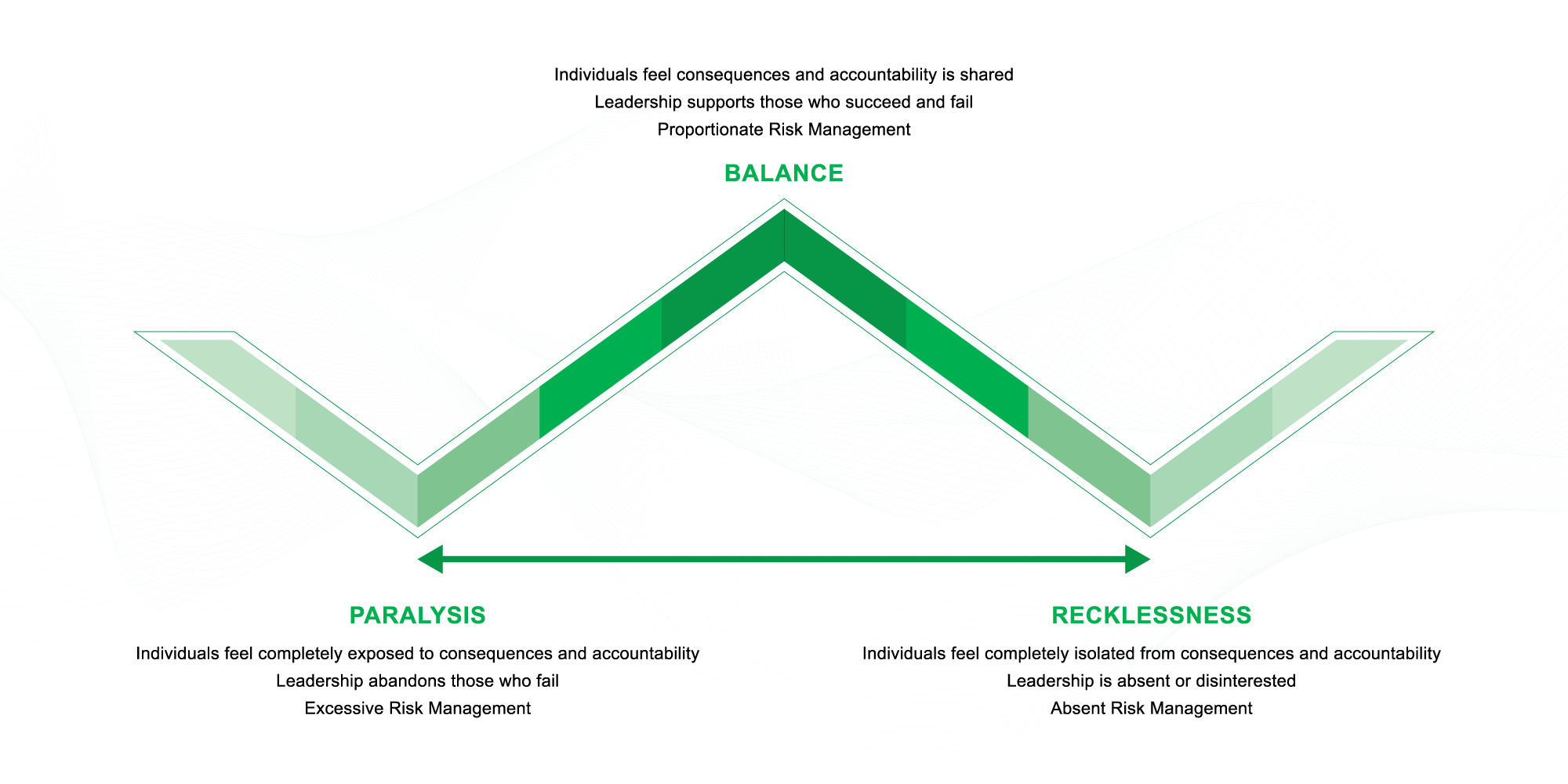Many decisions in life and at work are not clear cut but require an evaluation of risk. An unwillingness to take any risk leads to paralysis, missed opportunities, and passive errors (not doing what ought to have been done). Excessive risk-taking leads to recklessness, expensive consequences, and active errors (doing what ought not to have been done).
The idea of moral risk stems from the human tendency or bias to judge the ‘rightness or wrongness’ of a decision with the benefit of hindsight. Take the following example: “One sunny Friday afternoon, we stood around joking and laughing as usual next to our work utes. We had just finished off the road repair job we had been struggling with for 3 days. The mood was a mix of relief and weariness – today’s work had gone quicker than expected. It was 2pm, and we were deciding what to do next. Three of our team all come from a town about 4 hours’ drive away, and although tired, they were very keen to get on the road to surprise their families by arriving home Friday night. As team leader, I was pleased for the guys, suggested they share the driving and take a break, and encouraged them to get going as soon as possible. Then someone remembered the company driving policy says that no-one can drive more than 3 hours home at the end of a work day, and they must stay overnight and travel in the morning.”
The team leader is faced with a situation where ‘rightness’ and ‘wrongness’ is cloudy. Company policy is not clear on situations where a full day has not been worked, or where the driving can be shared. On one hand, the team leader can loosely interpret company policy and encourage her colleagues to get home early. This option comes with the small possibility of a fatigue-induced vehicle crash. On the other hand, she can uphold company policy (in a situation the policy may not be intended for). This option creates the certain outcome of disappointment for her colleagues. The extent of ‘moral risk’ the team leader feels will influence the decision. Significant moral risk leads to paralysis, while little or no moral risk opens the door to recklessness. The extent to which accountability for consequence is shared, the style of leadership and the quality of risk management can have a significant effect on the nature of the ‘moral risk’ felt by the team leader.
In this case, a proportionate risk management approach to achieve balance might include the following:
- The team discusses the issue and together and make the decision together, sharing the moral risk burden
- The decision is based on weighing up the risks and the available reasonable control measures (sharing the driving and taking breaks)
- The team leader knows that the senior leadership will look at the group decision in light of what made sense at the time of the decision rather than through the lens of hindsight should a negative outcome occur.
This article was inspired by chapter 3 of Øyvind Kvalnes (2017) Fallibility at Work – Rethinking Excellence and Error in Organizations, Switzerland: Palgrave MacMillan
 Dan Davis is the Operations Manager of HSE Global New Zealand. As part of the HSE Global, Dan helps organisations evolve from a traditional view of safety as a cost to business, to a strategic view of health and safety as a driver of business excellence, culture change, high performance, and high engagement.
Dan Davis is the Operations Manager of HSE Global New Zealand. As part of the HSE Global, Dan helps organisations evolve from a traditional view of safety as a cost to business, to a strategic view of health and safety as a driver of business excellence, culture change, high performance, and high engagement.

